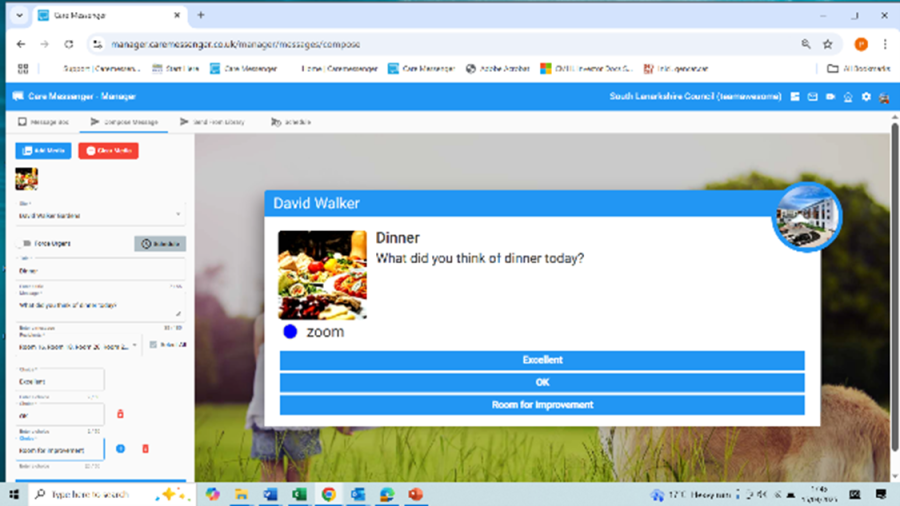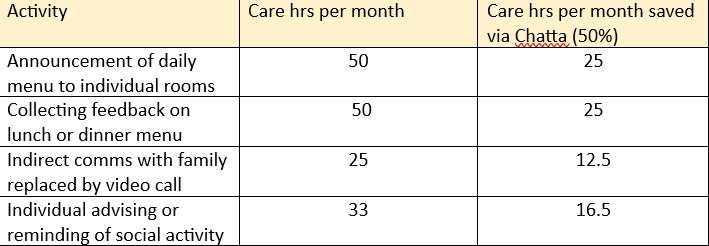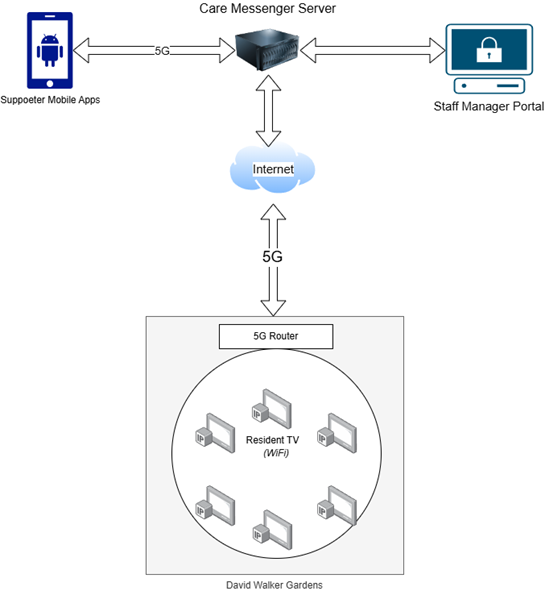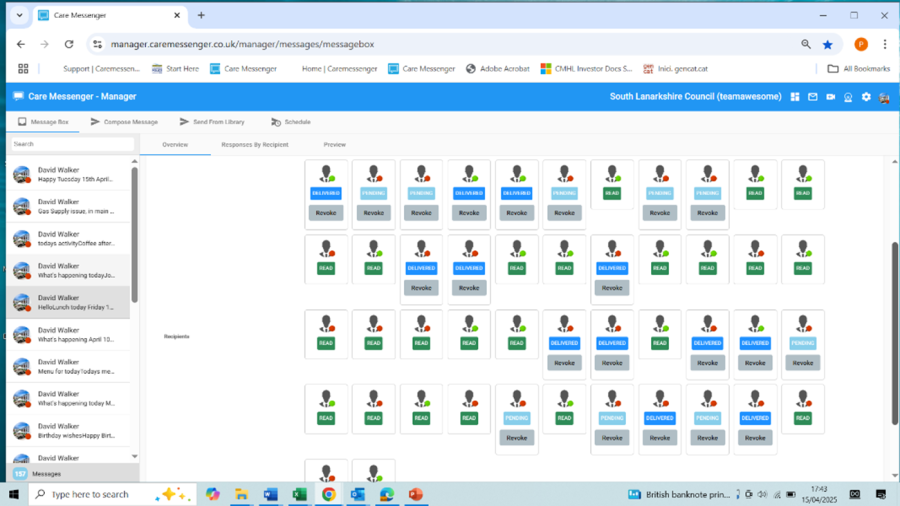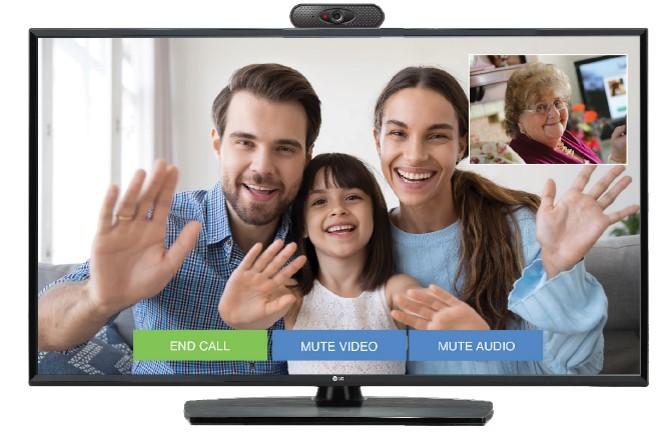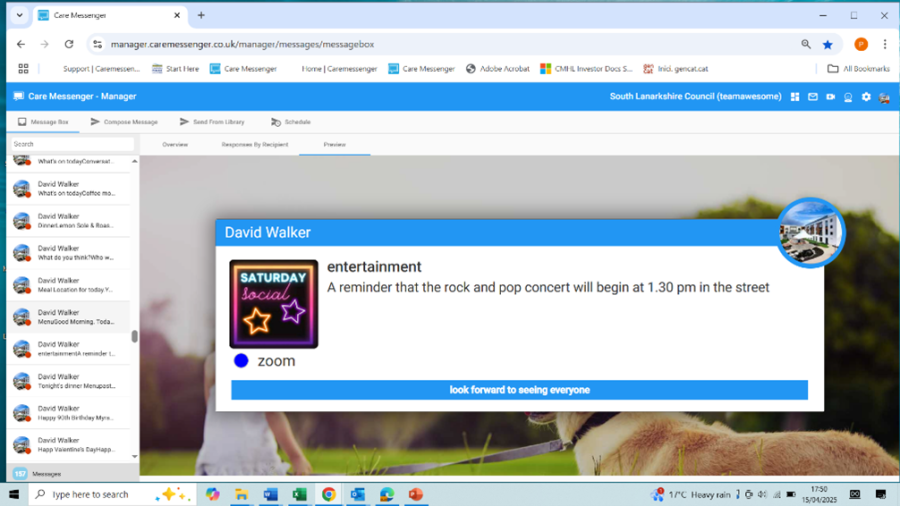Care Messenger Holdings Ltd - Glasgow City Region
A 5G-enabled smart TV messaging platform reducing loneliness in elderly care homes by connecting residents with loved ones and care teams while easing operational pressure on staff.
Funded by the Department of Science Innovation and Technology (DSIT) as part of the 5GIR programme, Glasgow City Region (GCR) utilised circa £750,000 to develop an innovation scheme, ensuring rapid outcomes within an 8-month period across the 5G Glasgow City Region (GCR) between September 2004 and March 2025. As part of the Smart and Connected Social Places Program, Chatta TV innovation project aims to reduce social isolation and loneliness among elderly care home residents in South Lanarkshire.
Care Messenger’s Chatta TV project transforms how elderly care home residents stay connected by turning smart televisions into interactive communication hubs. Designed for those who may struggle with or avoid using smartphones or tablets, Chatta TV offers a familiar and accessible interface that helps residents receive video calls, photos, messages and health-related updates directly on their TV screens. Messages and calls appear over live television so they cannot be missed, allowing families, befrienders and healthcare professionals to maintain meaningful contact with their loved ones.
This intuitive use of everyday technology enhances emotional wellbeing and reduces loneliness, a known risk factor as serious as smoking or obesity. It also supports care staff by easing the pressure of managing social support needs. By improving communication, connection and care outcomes, the project delivers both personal and operational benefits. As a 5G-enabled platform, Chatta TV supports the Glasgow City Region’s priorities for innovation in connected care and demonstrates a scalable and sustainable model for technology in social care.
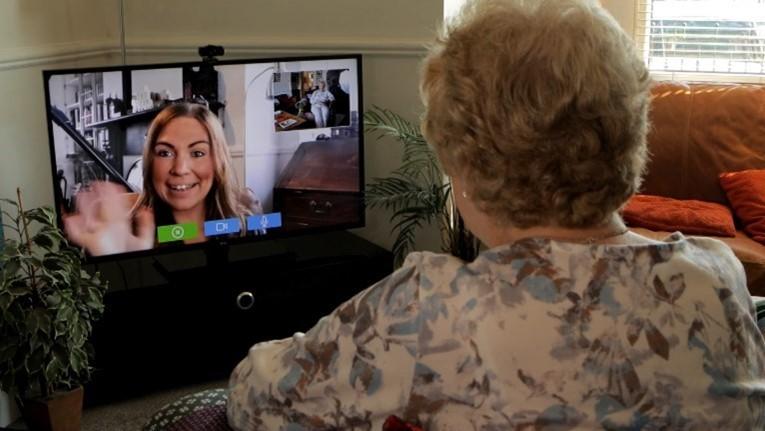
What is the Problem to be solved?
Care home residents, particularly older adults, are at significant risk of social isolation and loneliness, which have well-documented impacts on mental and physical health. Studies show loneliness can be as harmful as smoking or obesity, increasing the risk of depression, anxiety, and hospitalisation. According to Age UK, 1.4 million older people in the UK experience loneliness often, and research suggests over 60% of care home residents feel moderate to severe loneliness.
Despite widespread digital advancements, many elderly residents are unable or unwilling to use smartphones or tablets, which limits their ability to stay connected with family and friends. During the COVID-19 pandemic, attempts to bridge this gap using tablets often required significant staff supervision and resulted in limited uptake. The lack of accessible, user-friendly communication tools contributes to emotional distress, a sense of disconnection, and additional pressure on care staff to provide emotional support.
In addition, many care homes lack pervasive digital infrastructure in individual rooms, reducing opportunities to leverage digital solutions. Even where fibre broadband is present, service delivery can be inconsistent, highlighting the potential role of 5G to provide reliable, room-level connectivity.
What is the solution to the problem?
The Chatta TV project delivers a purpose-built digital communication platform designed specifically for care home residents. By embedding the Care Messenger Chatta application directly into LG smart TVs, the system transforms a familiar and trusted household device into a powerful connectivity tool. It enables residents to receive and respond to messages, video calls, photos, and videos sent by family, carers, or healthcare professionals—all appearing directly on their TV screen during normal viewing, ensuring visibility and ease of use.
Commercial model (Business Case)
Care Messenger offers Chatta TV as a flexible and scalable subscription-based managed service, tailored to suit the needs of care providers. The model is designed to support both individual deployments and larger-scale rollouts across entire care home estates or housing associations, allowing care organisations to adopt the technology without incurring heavy upfront costs. The professional LG TV hardware (43” 4K UHD networked TV) is available for a one-off capital cost of circa £398 plus camera (a range of cameras possible), and the Chatta software @ £15 per month per TV.
Benefits
The Chatta TV project has demonstrated substantial benefits across residents, families, care staff, and the broader social care system. These benefits span emotional wellbeing, care delivery efficiency, digital inclusion, and scalability potential.
Lessons Learnt
The Care Messenger – Chatta TV project yielded several valuable lessons that will inform future deployments, particularly where technology is introduced into complex care environments.
If you’re ready to embark on a connectivity project, we can point you to the suppliers with expertise in your sector.

